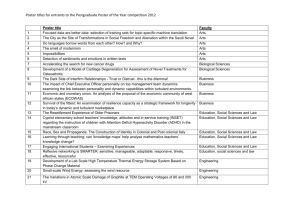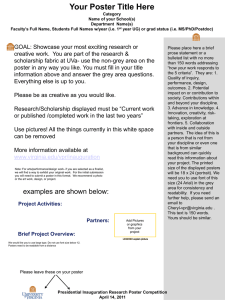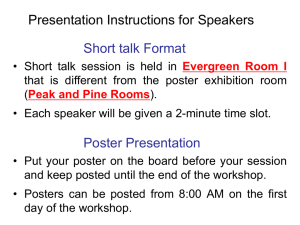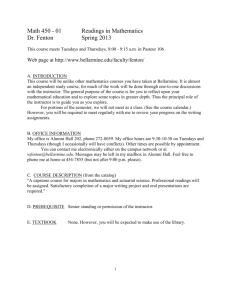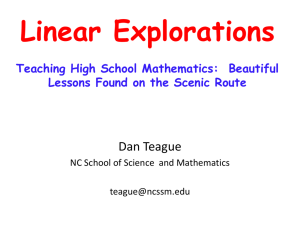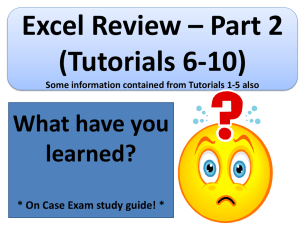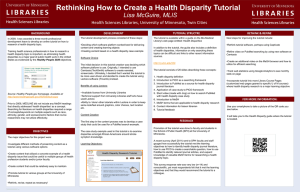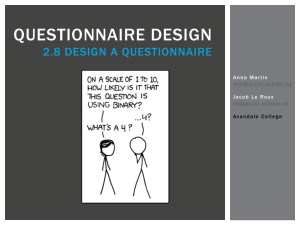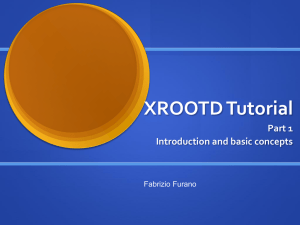Enhancing the students experience in mathematics through the use
advertisement
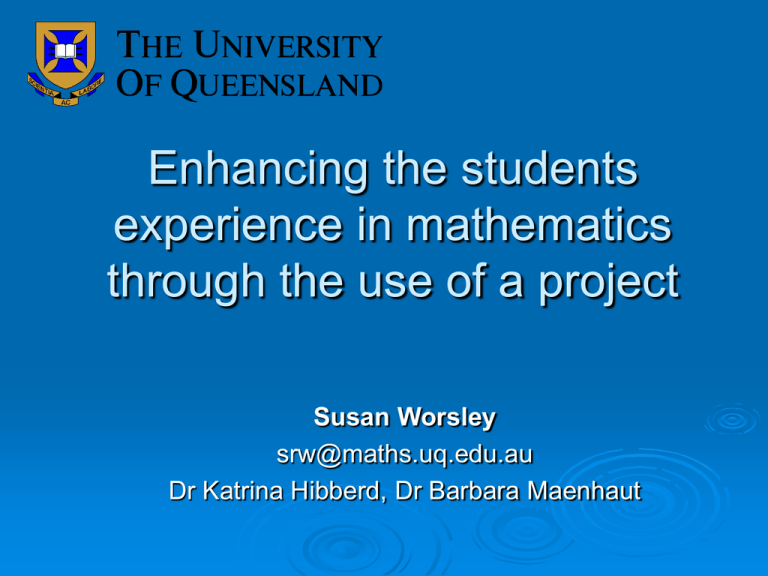
Enhancing the students experience in mathematics through the use of a project Susan Worsley srw@maths.uq.edu.au Dr Katrina Hibberd, Dr Barbara Maenhaut Outline 1. 2. 3. 4. 5. 6. 7. Context Topics Setup Assessment Outcomes Questionnaire results Conclusion Context Students in the class We introduced the project to: Explore a relevant mathematics topic Experience the interdisciplinary nature of mathematics Improve communication Develop research skills Topics Nuclear energy waste Dynamic response of structure Carbon offset schemes Magic squares Mendelian genetics RSA cryptography Fibonacci Tsunamis Tsunamis 1. 2. What happens to tsunamis as they head towards land? What systems are in place to warn us when we are in danger of a tsunami. Explanation Suggested reference e.g Australian Bureau of Meteorology Joel MacGrath, James Mahoney, Chris Farrell Setup Project starts second week of lectures Four weeks to complete Groups of size 3 or 4 Topic and poster production 10% of final mark, pass/fail grade Assessment 1. 2. 3. 4. 5. Progression to midway Production of a poster Peer assessment Individual summary Questionnaire Progression sheet Form a group Register topic Allocate tasks First group meeting held Poster Presentation Relevant Content Logically organised, visually appealing, neatly displayed and well written Two to three minute presentation in tutorial classes Peer Assessment Category Comments Content Well researched, correct, interesting Appealing, clear, good layout Well written, correct spelling and referencing Helpful comments, useful feedback Layout/appearance Grammar and referencing Other Individual Summary Each student summarises their topic Between 200 to 300 words Well written Students own work submitted to ‘turnitin’ in Blackboard Questionnaires Multiple choice and short answers Students Experience of the project Tutors Evaluating the marking of the assessment Tutorial Setting Typical Problem sheet little class interaction With project Group work Social interaction Peer assisted learning Dynamic environment Outcomes Groups Topics Poster Presentation Individual Summary Questionnaire (student) 53% of students developed more interest in the project than they expected 68% increased their understanding on how mathematics relates to other disciplines 82% learned to effectively interact with other group members 34% were inspired to continue further studies in mathematics Questionnaire (tutor) 70% of students continued to work in groups in the tutorial 60% of posters were of a high or very high standard 90% said it was not difficult to organise students into groups 70% found marking the progression sheet, poster presentation and peer assessment simple Conclusions We introduced this assessment to develop the following skills Communication Team work Research Result - complete change in tutorial class dynamics Comments from Students ‘I thought the group topic worked well as one of the first assessment pieces of the semester as it helped to reach out and make contact with other people, which may not have happened otherwise‘ ‘Good exciting project’ ‘Well I haven’t played with cardboard and glue since primary school’ Chau Le, Same Ward, David Pascall, Ned Connolly Natasha Ma, Jasmine Khan, Iain Fisher Acknowledgement This project was funded by the School of Physical Sciences teaching initiative
